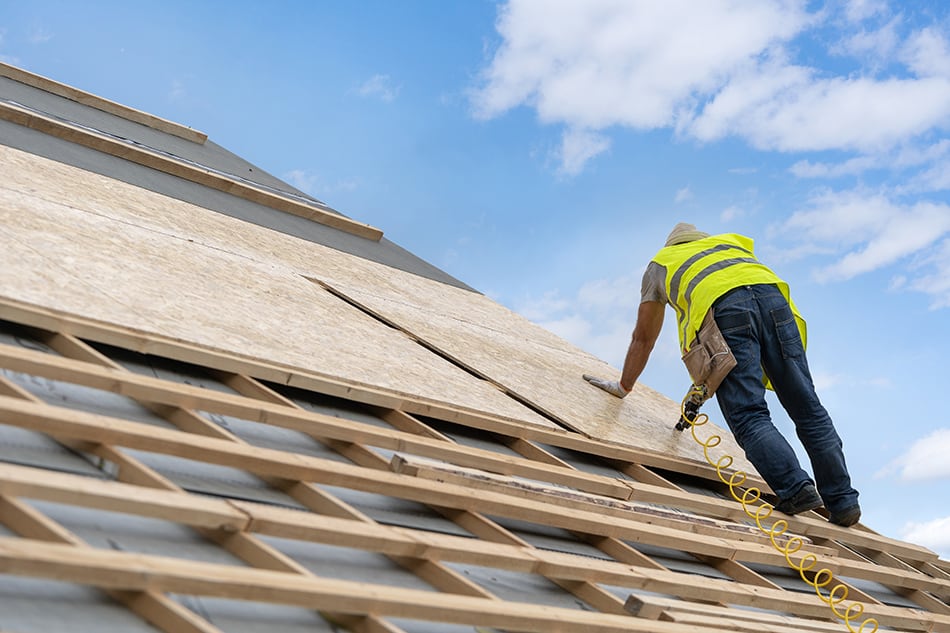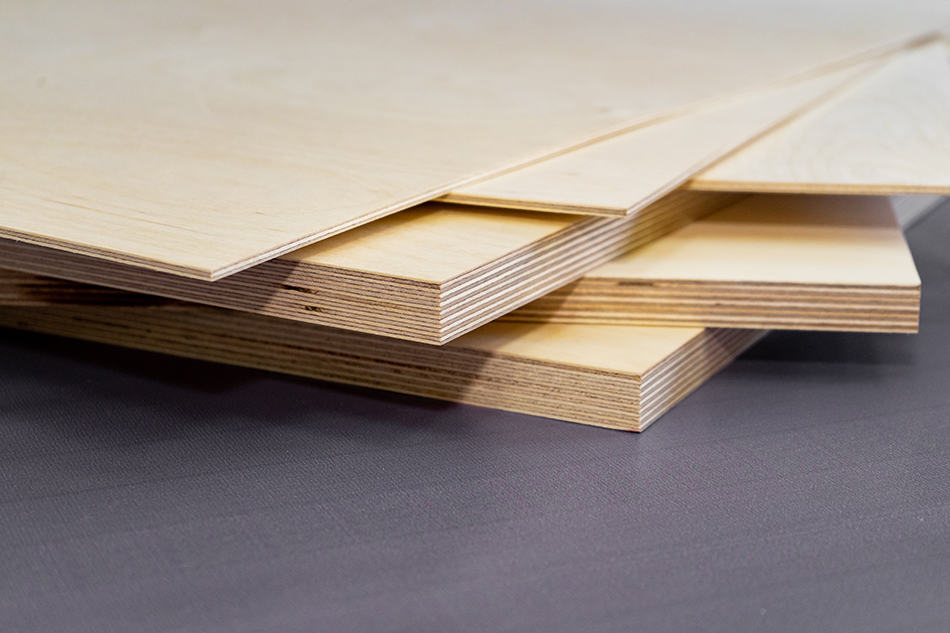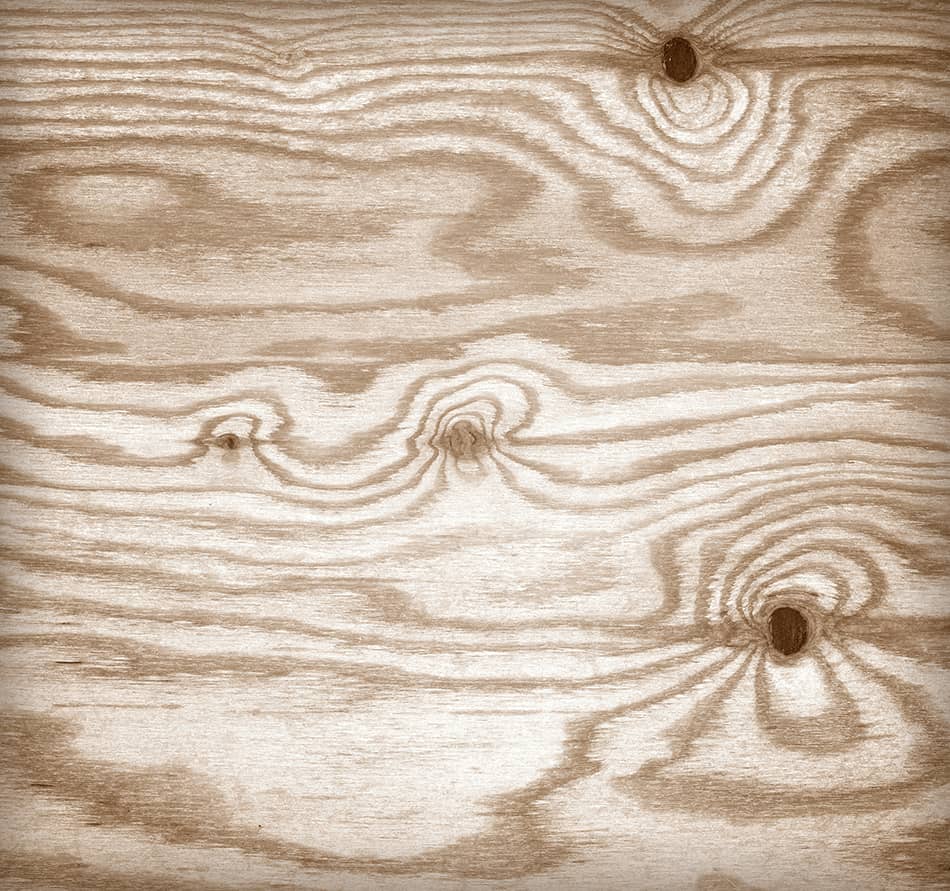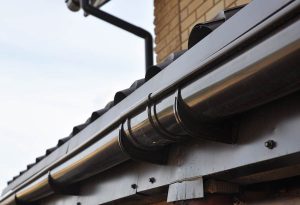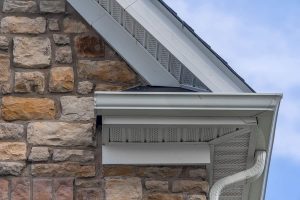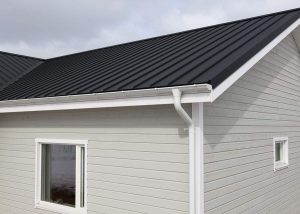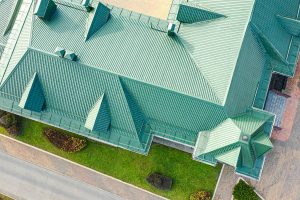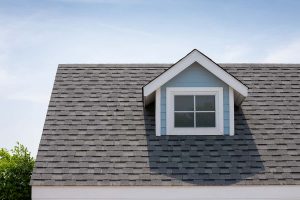Plywood is a common construction material that you may not have realized plays an important role in building a roof.
There are several types of plywood, and not all of them are suitable for use in structural applications, so it is important to know the difference if you are embarking on a DIY roof renovation to ensure the integrity and longevity of the roof. Learn all about the different kinds of plywood for the roof here.
What is Plywood?
Plywood is a type of engineered wood that is made from thin sheets of wood that have been glued together on top of each other. The grain on each sheet of wood will run at a right angle to the previous layer, giving it additional strength. Plywood contains at least three sheets of wood but will commonly contain upwards of five.
Why is Plywood Used in Roofing?
Roofs are built from rafters and trusses, which make up the framework of the roof, but a flat deck then needs to be laid on top of the frame, which the final roof material can be fixed to, for example, tiles or felt. Plywood is an ideal material for the deck of a roof because it is inexpensive and durable.
Using solid wood would be a waste in this instance because the deck of the roof won’t be seen once the roof is complete, so it doesn’t matter what it looks like. Plywood offers the strength required to hold the load of the material, which will go on top of it, along with heavy snowfall or ice.
Plywood has a good level of water resistance, which is useful when used in outdoor applications such as roofing. In the event that it does expand due to moisture, it does so evenly so that the structure of the roof is not affected. It also dries out quickly, which reduces the chance of mold buildup and other moisture-related issues.
Plywood is also easy to work with and can be cut to size using handheld saws or circular saws. The standard size for sheets of plywood is four feet by eight feet, making it a reasonable size to work with while covering a decent surface area on the roof. Larger sizes are available, though less common. Plywood is also available in various thicknesses to suit different loads.
Types of Plywood for Roofing
There are two types of plywood used in roofing, and these are structural plywood and general plywood.
Structural
Structural plywood is the highest grade of plywood which comes with a performance rating to guarantee that it meets or surpasses structural building regulations. This type of plywood is useful in a range of situations, but as the name implies, it is best used in structural applications. It will be water-resistant and, therefore, well suited to use on a roof where moisture could be an issue.
The key difference between structural and general plywood is the type of glue used to bond the layers together. Structural plywood will use phenol-formaldehyde resin or melamine-urea-formaldehyde to glue the layers of wood together.
Phenol formaldehyde resin is considered to be the best-performing bond and therefore results in the highest grade of structural plywood. This type of resin is resistant to temperature changes, and it prevents moisture from penetrating the wood.
General
General plywood is a lower grade of plywood that is best suited to general and interior use, though it is known to be used for roofing in some scenarios, especially in dry climates. General plywood has its layers glued together using urea-formaldehyde resin, which can deteriorate if it is exposed to wet conditions.
It can also weaken with extreme temperature changes. The benefit of general plywood is that it is significantly less expensive than structural plywood, so it can represent a significant cost saving if you have a large roof to cover.
You can also cover the plywood in waterproof sheeting, which will help to prevent any moisture penetration issues, but for the best performance against wet conditions, you should use structural plywood, which is intended for outdoor applications.
Grades of Plywood for Roofing
A
Grade A plywood is the highest grade of plywood. It will be structural plywood with an extremely strong bond used to glue the layers of wood together, which makes the plywood highly resistant to moisture and temperature changes, and results in very strong wood. Grade A plywood will also be the most attractive aesthetically, with few or no imperfections.
This makes it an ideal type of plywood for interior use or on projects where it will be used as a surface, but this is not an important aspect of roofing. The lack of imperfections such as knots can help to ensure the strength of the plywood, though, as knots in the wooden sheets can lead to weak spots over time.
B
Grade B plywood is also a type of structural plywood that will have few visual imperfections. It is usually made using moisture-resistant glue that is known for its strength.
Although this results in a great quality of plywood, the plywood will be categorized as Grade B because it will not be as perfect on the surface as Grade A plywood. You might notice some small knots or holes on the surface of the plywood, though these will not be in large amounts or very obvious.
C
Grade C plywood will be made from wooden layers, which have more surface defects compared to Grade A and Grade B plywood. On this plywood, you might notice some considerable visual imperfections, including knots, but it will still be strong and suitable for a wide variety of applications, including roofing.
Grade C plywood can be used on projects where the surface of the plywood will be seen, especially if you intend to paint it. In using Grade C plywood for this purpose, you can cut the cost of your project and still have a nice-looking surface. When it comes to roofing, Grade C plywood is considered to be structural, and so is perfectly suitable for use on the roof.
D
Grade D is the lowest grade of plywood. This grade is a reflection of the number of visual imperfections in the wood and does not reflect the quality. Grade D plywood will have a fair amount of knots and holes visible, but it will still be strong and water-resistant and therefore suitable for roofing.
Grade D plywood isn’t ideal for any projects where the wood will be seen, as it can look unfinished and even ugly. Instead, it is perfect for structural use, where it will usually be hidden by another more attractive material. Grade D plywood is among the most budget-friendly types of plywood, making it a good choice to keep building costs down.
CDX
CDX plywood is a very common type of plywood that is known for its strength and affordability. The ‘C’ in CDX refers to the grading of one side of the plywood, and the ‘D’ refers to the opposite side. This means that the uppermost sheet of plywood which you can see, will be a grade C with some imperfections, and the underneath visible side of the plywood will have a grade D sheet with more noticeable imperfections.
This is a good choice for projects where the upper layer of plywood can be seen because you can get a reasonably good finish while keeping costs down by also having part of the plywood, which is a grade D. The X in CDX refers to the type of glue used to bond the different layers together.
CDX uses an extremely strong glue which makes the plywood water-resistant as well as resistant to extreme temperature changes. This makes it an ideal choice of plywood to use in roofing, where it might be subject to moisture or sudden changes in temperature.
CDX plywood is a construction-grade type of wood that is intended for use outdoors. It is the most commonly used grade of plywood in roofing, owing to its strength and the fact that it is cost-effective.
Size of Plywood for Roofing
The thickness of the plywood used on a roof will reflect the load that the roof needs to take. A flat roof will have a heavier load and, therefore, will need a thicker type of plywood compared with pitched roofs, which take a lighter load as the weight on them is more evenly spread. The minimum thickness of plywood used in roofing is usually ⅜ inches. This is suitable for low loads where the roof rafters are positioned 16 inches apart.
More commonly, you can expect to find roofing plywood in ½ inch or ⅝ inch thicknesses. These thicknesses will be suitable for standard loads where the roof rafters are positioned 24 inches apart. For roofs that need to be able to take heavier loads, plywood with a ¾-inch thickness will be most suitable.
